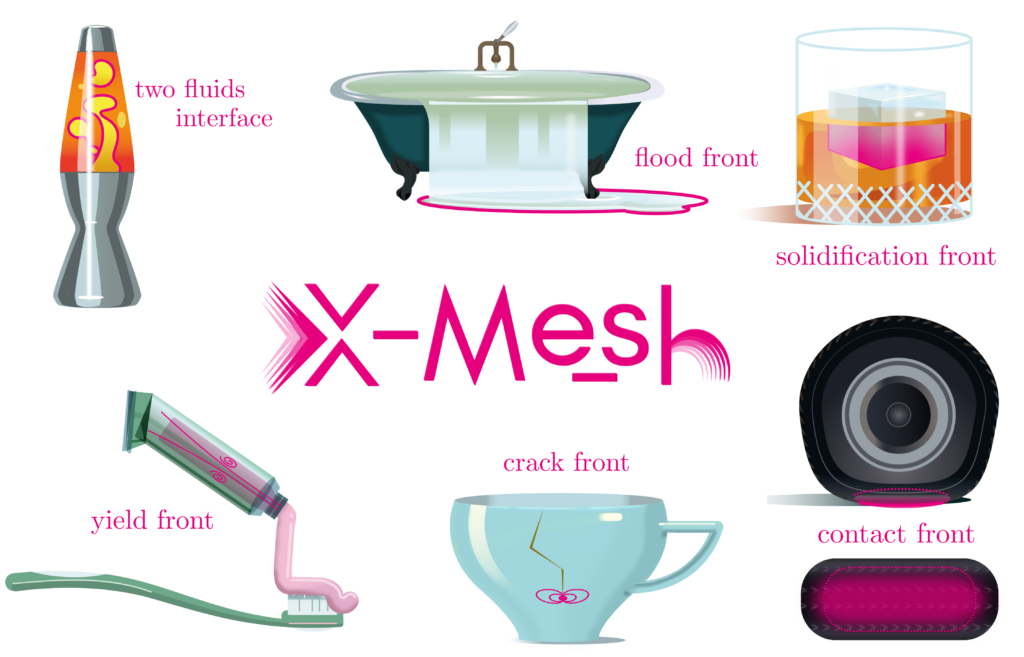X-MESH is a joint project between the Université Catholique de Louvain (UCLouvain) in Belgium (PI: Jean-François Remacle) and the Ecole Centrale of Nantes (ECN) in France (PI: Nicolas Moës).
This project will develop an innovative approach, X-MESH, to overcome a major difficulty associated with engineering analysis: we aim to provide a revolutionary way to track physical interfaces in finite element simulations using extreme deformation of the meshes.
Unprecedented low computational cost, high robustness and accuracy are expected as the proposed approach is designed to avoid the pitfalls of the current methods, especially for topological changes.
The key idea of the project has emerged in a synergistic brainstorming between J.-F. Remacle (meshing methods) and N. Moës (computational methods). This key idea is to allow elements to deform up to zero measure. For example, a triangle can deform to an edge or even a point. This idea is rather extreme and totally revisits the interaction between the meshing community and the computational community who, for decades, have striven to interact through beautiful meshes.
Six areas in fluid and solid mechanics as well as heat transfer are targeted. Interfaces will be either :
(i) material, i.e. attached to particles of matter : the interface between two immiscible fluids or the dry interface in a wetting and drying model)
(ii) immaterial, i.e. migrating through the material : a solidification front, contact front, yield front in yield stress fluid flow or a crack front.

Successes brought by X-MESH are expected in the following engineering areas: safety design and maintenance, manufacturing processes, coastal engineering, energy efficiency, ocean modeling to cite a few. The project takes place in a stimulating environment mixing senior staff with PhDs and Post-docs to produce and disseminate publications with open source pieces of software. It also intends to create a synergy at large with the computational communities dealing with interfaces and fronts in all fields of science: topology optimization, superconductivity, tissue growth, hydrogel swelling, crystal growth, ferroelectric crystal etc.
